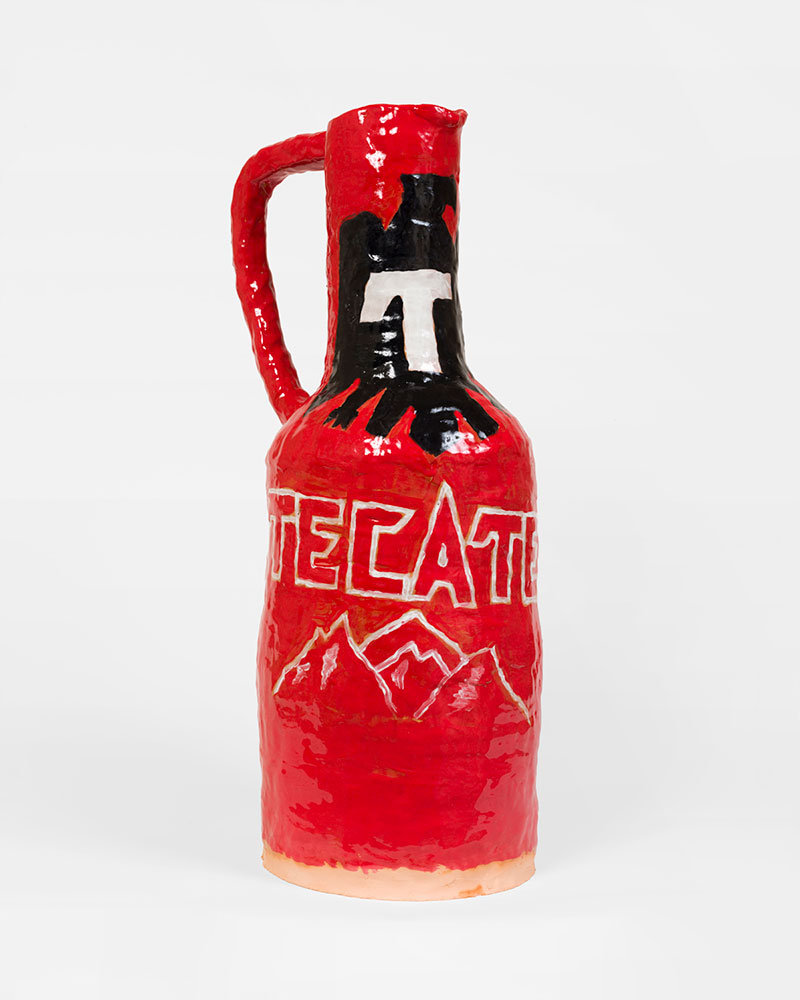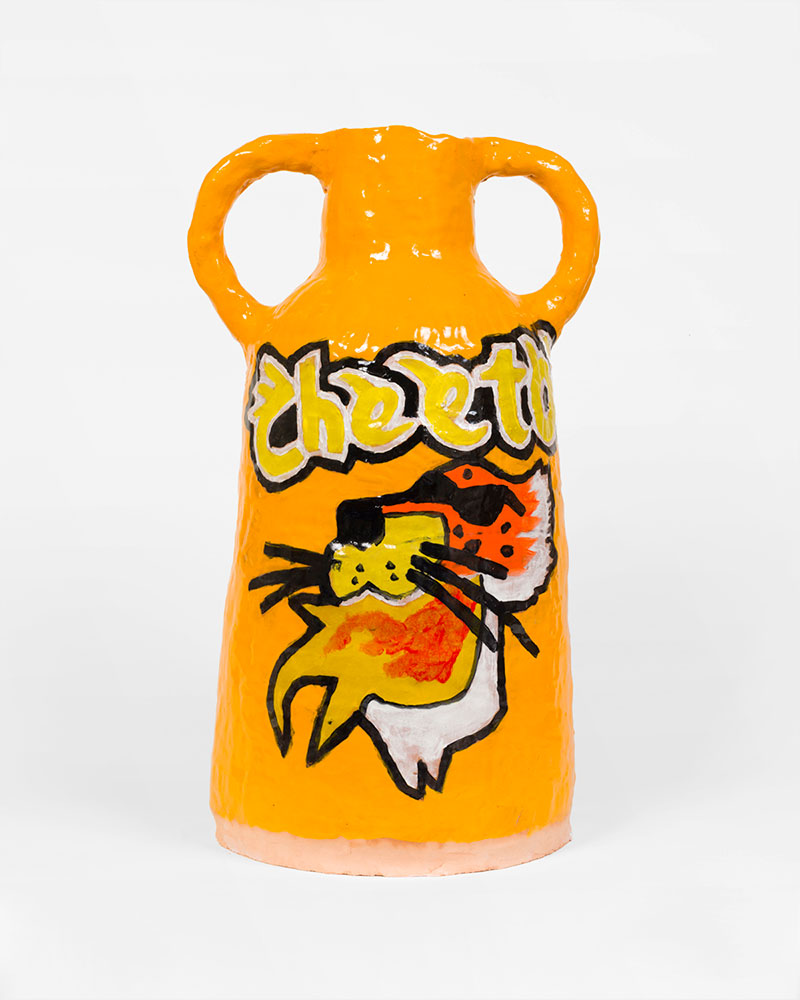There is a lacerating wit in the work of Grant Levy-Lucero, a solemn shrewdness dressed in Bermuda shorts. He is playful but he is not playing around.
His exhibition of crude ceramics at Night Gallery borders one wall of an otherwise barren chamber. Displayed upon a 30-foot shelf is a series of vividly colored and shakily constructed kraters and amphorae of varying widths and heights, some little more than a foot tall, others exceeding a yard in height. The rest of the room is affectingly unadorned.
Twenty stoneware vessels, hand-built and tottery, carry the names of commercial products that can be purchased in corner shops, garden centers, gas stations, hardware stores, and bodegas across Los Angeles. The products are familiar; Cheetos (his rendition is particularly arresting), Vaseline, Tecate. Others he specifically includes in order to strengthen the connection to Greek and Roman mythology: Ajax, Monster. The installation of the work evokes a temple, or, conversely, a tomb. Yet most of all it resembles a museum, but not an art museum; a museum of antiquity, of dead culture.

Grant Levy-Lucero, Master Discount Center, Tecate (2017), photo by Ed Mumford, courtesy of Night Gallery and Grant Levy-Lucero.
The artist has slyly manufactured artifacts of our future’s past. He has excavated everything we ever threw away, and there is a lot of it. Levy-Lucero has looked at the museum, the palace of high culture, and placed us and our habits within it. But it is a museum of the future. We are long gone. Yet here is the evidence we once were here. He is not only referencing history but showing us that we are history. His lumpy urn, all 37 inches of it, decorated with Morton Salt’s familiar umbrella-toting girl, references the ancient model; as these vessels are long known to have carried consumables—wine, olive oil—his new version speaks to our insatiable consumption, and its consequences. All of this is done in a playful, even jolly, manner.
We are familiar with this sentiment. We’ve heard the same hoary chestnut in a variety of renditions: ars longa, vita brevis; eat drink and be merry, the conqueror worm; alas, poor Yorick; that Shelley poem we had to read in high school but can no longer remember the name. Here, however, it is delivered with a charm and animation that refreshes.
The artist has recast us in the role of lantern-jawed movie hero Charlton Heston. We, now, are the star in the final scene on the beach of the original Planet of the Apes film, discovering the Statue of Liberty toppled and half submerged. We have been given a macabre glimpse of our future. Levy-Lucero has taken the role of Cassandra, demanding this time that we pay attention, damnit: vote, exercise, recycle, take better care of your teeth.



















0 Comments